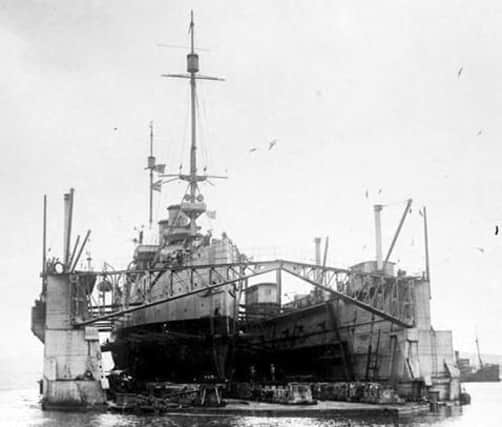ON THE WATERFRONT: The story of the little known Wear yard’s floating dock


In 1912, an 11-acre site (known as the Saltgrass) adjacent to Sir John Priestman and Co Ltd’s yard at Southwick was laid out to build new ships, floating docks and pontoons. With river frontage of almost 300 yards, the gently sloping land formed part of the late John Pratt’ estate.
Essentially, this was an overflow yard for the Tyne business. One of the earliest ventures was to build a large floating dry dock for well-known British shipowners Furness, Withy and Co, who intended to establish a shipbuilding and repair yard at Schiedam, near Rotterdam. This was the New Waterway Shipbuilding Company.
Advertisement
Hide AdAdvertisement
Hide AdSwans was no stranger to floating dock construction, many having already been built on the Tyne for customers worldwide - including the SP Austin and Son pontoon at Bishopwearmouth Panns in 1903.
Construction of Schiedam Dock, as it became known, began on May 21, 1914.
This was produced in three sections and bolted together on the Wear. Capable of lifting ships of up to 10,000 tonnes deadweight and having an overall length of 500 feet and entrance width of 75 feet, the dock had double walls, each 43 feet high.
On completion in 1916, the British Admiralty requisitioned the floating dock and towed it to Invergordon naval base on the Cromarty Firth, arriving there in September.
Advertisement
Hide AdAdvertisement
Hide AdEquipped with shore-powered electric pumps from Gwyness Ltd of London, it was able to accommodate light cruisers as well as smaller ships. Being relatively close to Scapa Flow, much time was saved by not having to send certain Grand Fleet ships further afield for dry-docking.
In April, 1920, the floating dock was returned to Furness Withy and towed to Schiedam by the International Tug Co of Rotterdam, using the powerful ocean tugs, Humber, Schelde and Seine.
Although the fate of Schiedam Dock cannot be established, it would have been fortunate to survive Second World War airiel bombing.